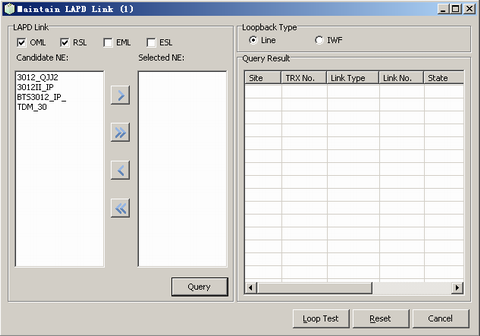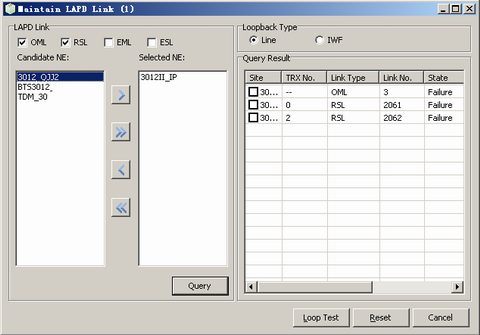This describes how to query the status of the OML, RSL, EML, and ESL, and the status of the PBSL when the PCU is in external mode. This also describes how to perform loopback test on LAPD links and how to reset LAPD links.
Prerequisites
- The LMT runs normally.
- The communication between the LMT and the BSC is normal.
Context
Figure 1 shows the internal transmission on the interface boards.
When the service incurs errors, you can query the status of LAPD links. If the status of links is faulty, perform Loop Test to loop back the signals sent by the CPU to determine whether the CPU transmission on the corresponding board is normal.
The LAPD link is categorized into OML, RSL, EML, ESL, and PBSL. Note that the PBSL is available in the case of external PCU only. Table 1 describes the links.
Parameter |
Meaning |
|---|---|
OML |
The OML is the operation and maintenance link between the BSC and the BTS. One OML corresponds to one site. If an OML incurs an error, its corresponding site and the RSLs on the site become faulty. |
RSL |
The RSL is the radio signaling link between the BSC and the BTS. One RSL corresponds to one TRX. If an RSL incurs an error, its corresponding TRX is faulty. |
EML |
The EML is the extended operation and maintenance link between the BSC and the BTS. Each HUB BTS or IP BTS requires one EML to report its software loading and logs. |
ESL |
The ESL is the signaling link between the BTSs. It is used to set up the signaling cross link between the HUB BTSs or IP BTSs. |
PBSL |
The PBSL is the signaling link between the BSC and the PCU. If the PBSL is faulty, the Pb interface board or the external PCU may be faulty. |
There are two loopback types of LAPD links:
- Line loopback: The TDM BTS, HDLC BTS, and HUB BTS links support line loopback.
- IWF loopback: The HDLC, HDLC HUB, and IP links support IWF loopback.
Procedure
- Through GUI
- Through MML


